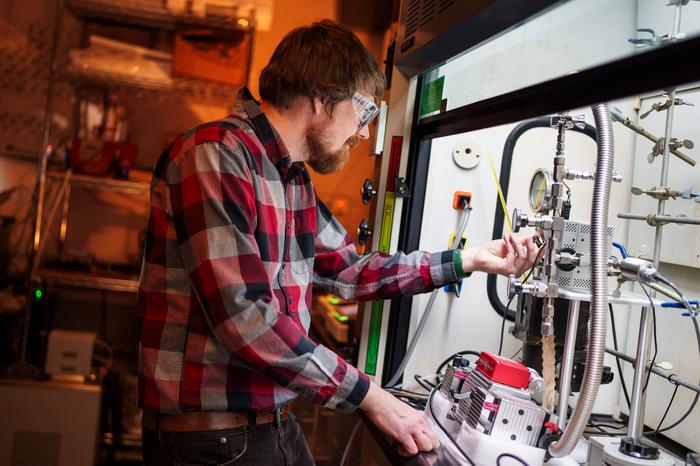Climate Insider Brief:
- Sandia National Laboratories is leading research into subterranean storage solutions for hydrogen, recognizing its importance in the transition to a carbon-free energy landscape.
- Led by Tuan Ho, researchers are exploring repurposing depleted oil and natural gas reservoirs to store hydrogen, addressing its crucial role in renewable energy integration and mitigating intermittency challenges.
- Sandia’s focus on porous sandstone and shale formations highlights promising retention capacities and potential contamination risks from residual natural gas, underscoring the need for meticulous analysis and mitigation strategies.
Sandia National Laboratories is at the forefront of research into subterranean storage solutions for hydrogen, a crucial element in the transition towards a carbon-free energy landscape. As the need for hydrogen as an efficient fuel increases, research around hydrogen storage becomes an even more important focus for scientists.
Led by Tuan Ho, a chemical engineer at Sandia, researchers are exploring the viability of repurposing depleted oil and natural gas reservoirs for storing hydrogen. This endeavour is driven by the recognition of hydrogen’s crucial role in facilitating renewable energy integration and addressing the intermittency challenges inherent in sources like solar and wind power.
The fundamental appeal of hydrogen lies in its versatility. It can be generated through electrolysis of water using renewable energy sources, offering a pathway to sustainable production. Once produced, hydrogen can serve various energy needs, from electricity generation to powering heavy industries and fuel-cell vehicles. Moreover, its capacity for long-term storage makes it an ideal candidate for bridging the gap between energy supply and demand fluctuations, especially in seasonal contexts.

However, the endeavour of underground hydrogen storage presents unique challenges. Unlike conventional carbon-based fuels, hydrogen possesses lower energy density and is notoriously difficult to compress, rendering traditional storage methods impractical. While salt caverns have been explored as potential storage sites, their geographical limitations underscore the need for alternative solutions.
At the heart of Sandia’s research lies the investigation into the behaviour of hydrogen within porous sandstone reservoirs, historically associated with oil and gas extraction. Through a combination of laboratory experiments and sophisticated computer simulations, researchers aim to ascertain whether these reservoirs can provide a secure and reliable storage environment for hydrogen.
The assessment of two critical factors becomes very important: retention and contamination risks. Initial experiments indicate that while sandstone may not retain hydrogen effectively, certain shale formations exhibit promising retention capacities, with up to 10% of the gas being adsorbed. Furthermore, simulations elucidate the intricate molecular interactions between hydrogen and clay minerals commonly found in shale, shedding light on potential leakage pathways.
Moreover, the risk of contamination from residual natural gas presents a nuanced challenge. While the release of natural gas into stored hydrogen may compromise its purity, it also signifies the complex interplay between different subsurface elements. Through meticulous analysis, researchers aim to quantify these risks and devise mitigation strategies to ensure the integrity of stored hydrogen.
Looking ahead, Sandia’s research holds significant implications for the scalability of underground hydrogen storage. By leveraging insights from laboratory studies and simulations, the groundwork is laid for large-scale field tests, offering tangible validation of the feasibility of utilising depleted reservoirs for hydrogen storage. Such endeavours align closely with broader efforts to decarbonize the energy sector and foster the transition towards a hydrogen-based economy.
However, the journey towards widespread adoption of underground hydrogen storage is not without its challenges. Further research is warranted to comprehensively understand the potential interactions between stored hydrogen and microbial or chemical elements within reservoirs. Only through rigorous inquiry and collaborative efforts can we unlock the full potential of hydrogen as a cornerstone of the clean energy future.
In conclusion, Sandia National Laboratories’ research into subterranean storage of hydrogen represents a crucial step towards realising the scope of hydrogen storage for climate action. Grounded in scientific rigour and propelled by a commitment to innovation, this endeavour exemplifies the quest for sustainable solutions to meet the energy challenges of tomorrow.
To stay informed about the climate industry explore our latest climate tech news.
Featured Image: Credit: Sandia National Laboratories








